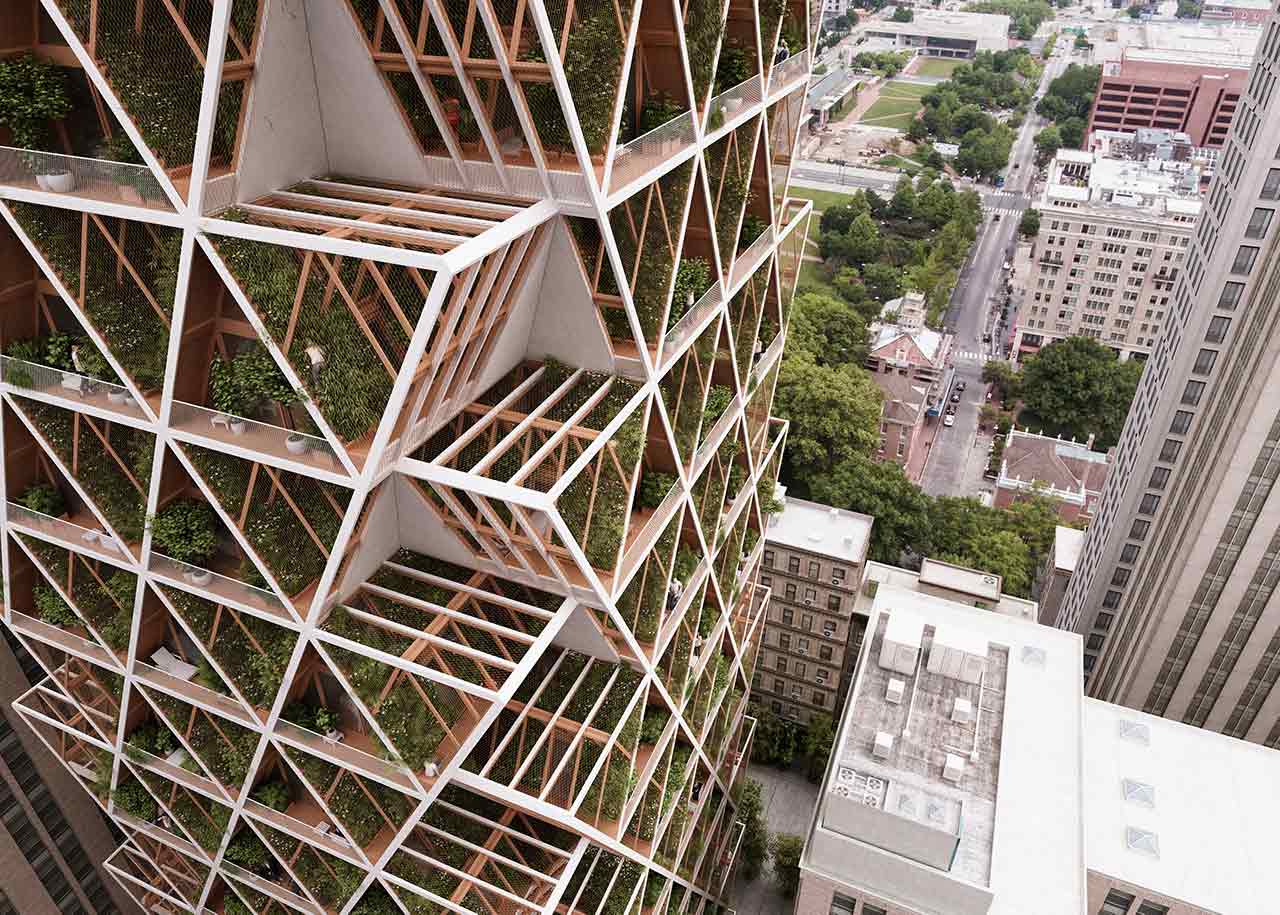
[Rendering: Courtesy of Fei & Studio Precht]
The Farmhouse
Tired of the disconnect between people and the food they consume, Precht is taking urban farming to the next level with The Farmhouse. The building will be created using a fully modular building system filled with vertical farms. Inspired by traditional A-frame houses, each home is separated by angled walls, which allows for plentiful natural light and ventilation. Each unit will be connected to the farms, and residents can use the space to grow their own food or sell it to the community in the first-floor farmers’ market. The building will take advantage of its byproducts, recycling them for various purposes. For example, the already-large amount of heat buildings put out into the world will be redirected to help grow warmer-climate foods like potatoes, nuts, and beans, and food waste will become compost to help grow new foods.
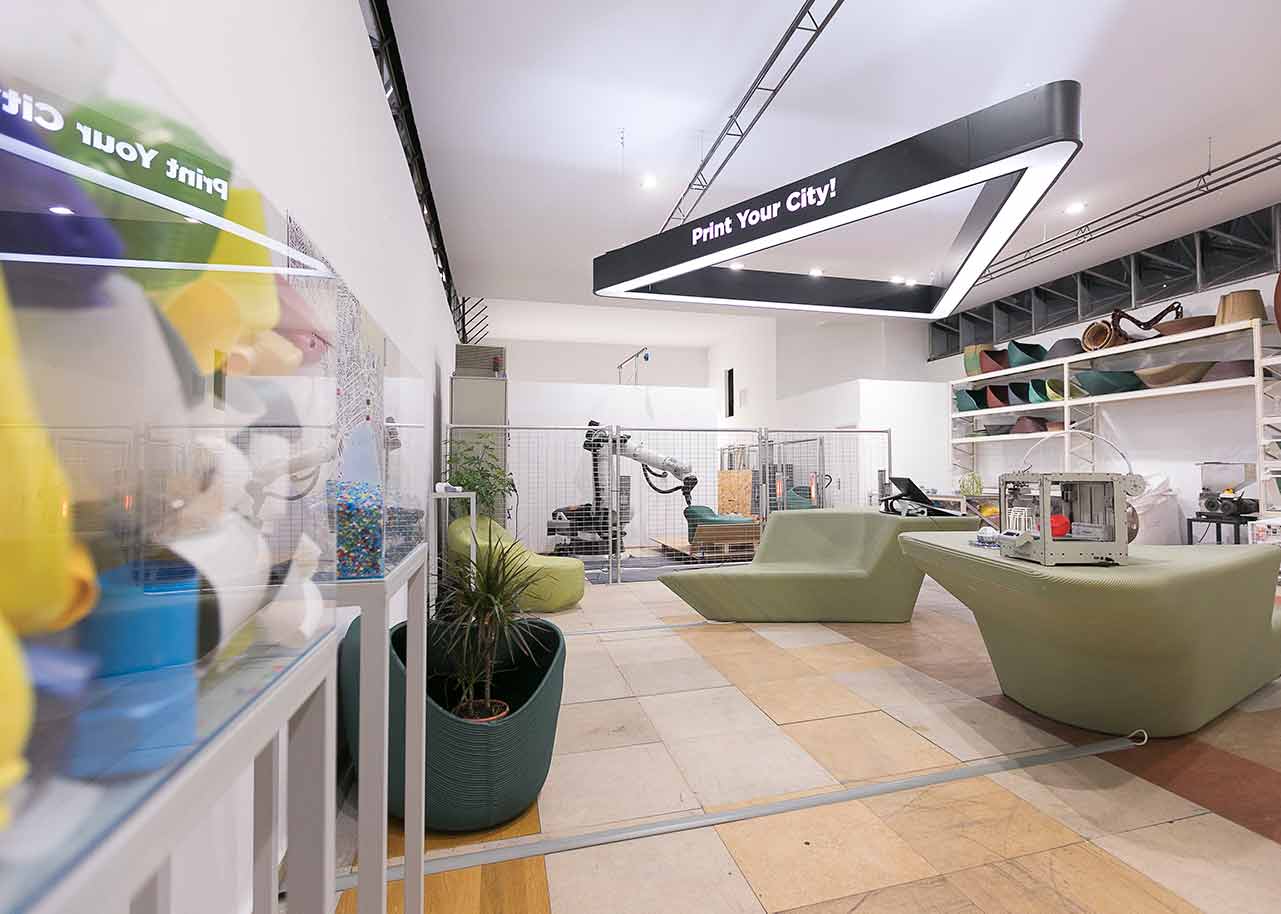
The New Raw’s Zero Waste Lab. [Photo: Stefanos Tsakiris]
“Print Your City”
The New Raw is turning its conceptual “Print Your City” initiative into reality with the company’s first Zero Waste Lab in Greece. There, Greek citizens will be able to bring in their plastic waste and use it to design and create custom, fully functional furniture. In addition to furniture designing, the lab will also provide learning materials around recycling plastic and the circular economy. Since the launch of the project’s website in December 2018, more than 3,000 designs have been submitted.
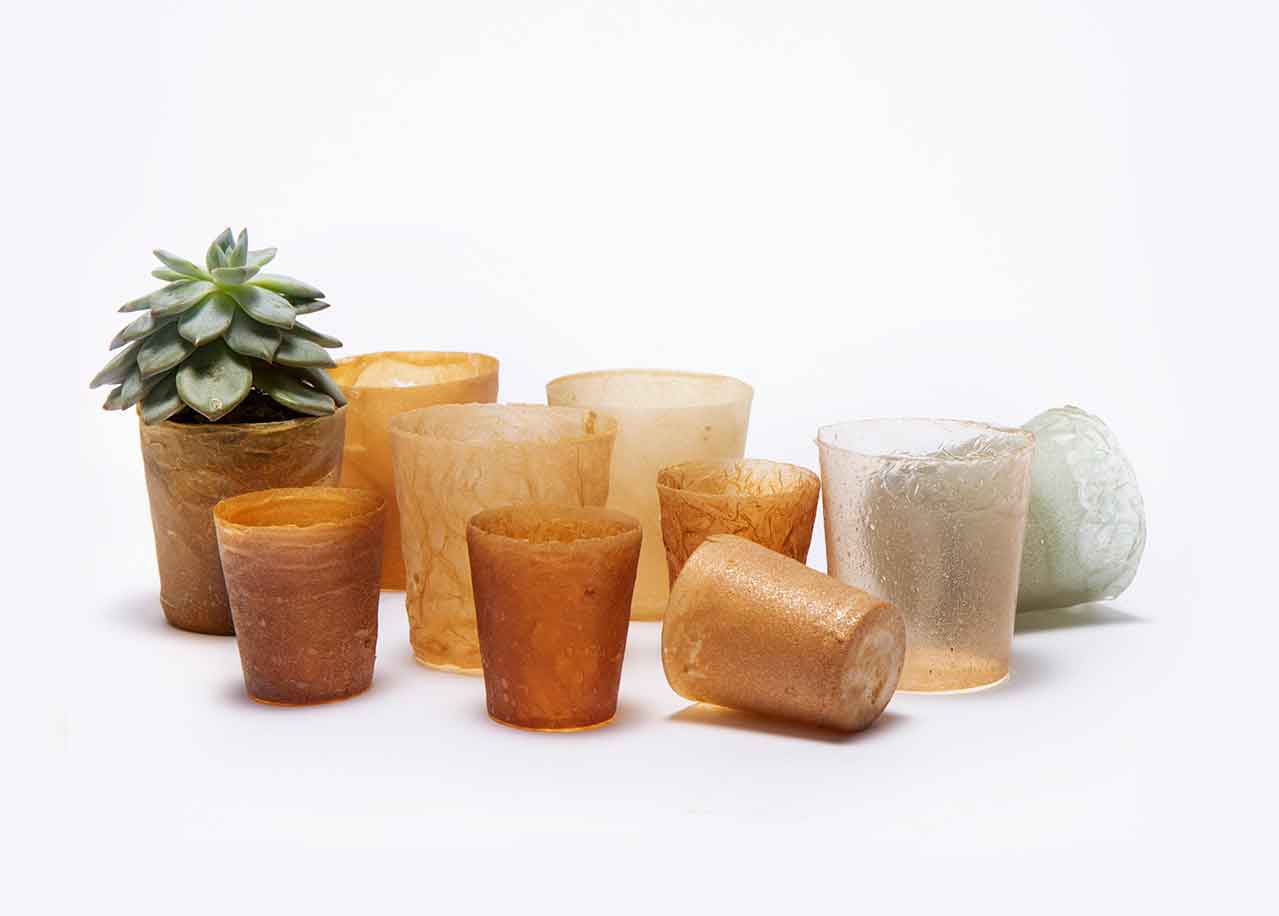
[Courtesy of Shellworks]
The Shellworks
Your leftover scraps from a gourmet lobster meal may no longer go to waste; four designers at the Royal College of Art and the Imperial College in London have created a new process that transforms seafood waste into recyclable and biodegradable bioplastic. When the design group realized chemically extracting one of their product’s main ingredients—chitin, found in crustaceans, insects, and fungi—was far too expensive and time consuming, they created three new machines to help with the process: the Dippy, Vaccy, and Sheety. Each is used to manufacture the bioplastic in different ways, and as such, the bioplastic can be adjusted by flexibility, clarity, and thickness.
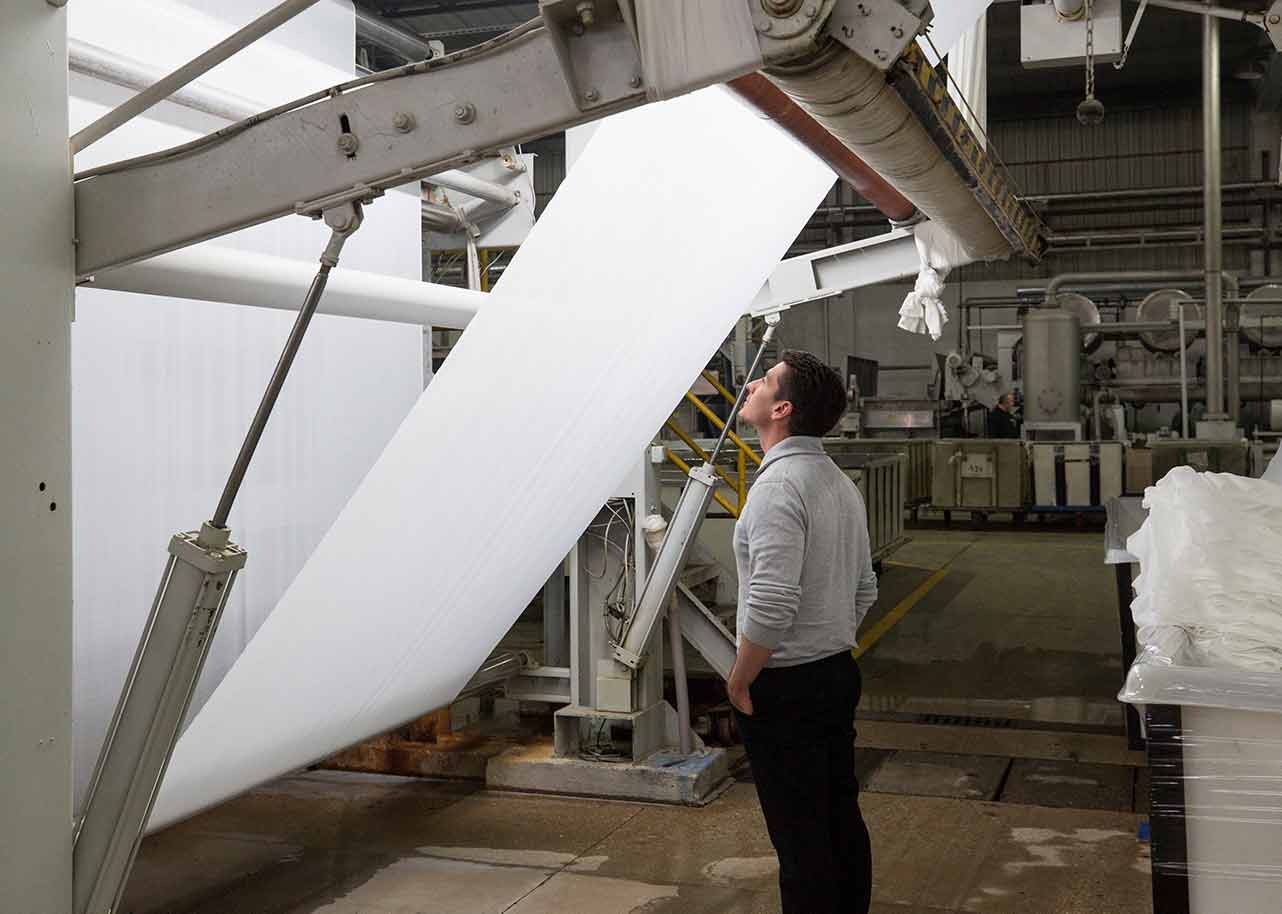
[Photo: Courtesy of IKEA]
GUNRID Curtain
IKEA is taking steps to reduce indoor air pollution with its newest creation, the GUNRID curtain, which purifies the air. The purification process utilizes both indoor and outdoor light to trigger the breakdown of harmful chemicals and is similar to that of photosynthesis. Citing the global issue of indoor pollution, IKEA says it hopes to raise awareness of the issue with GUNRID and aims to pave the way for future technologies that can help eliminate the problem, too. The curtains are expected to hit the market in 2020.
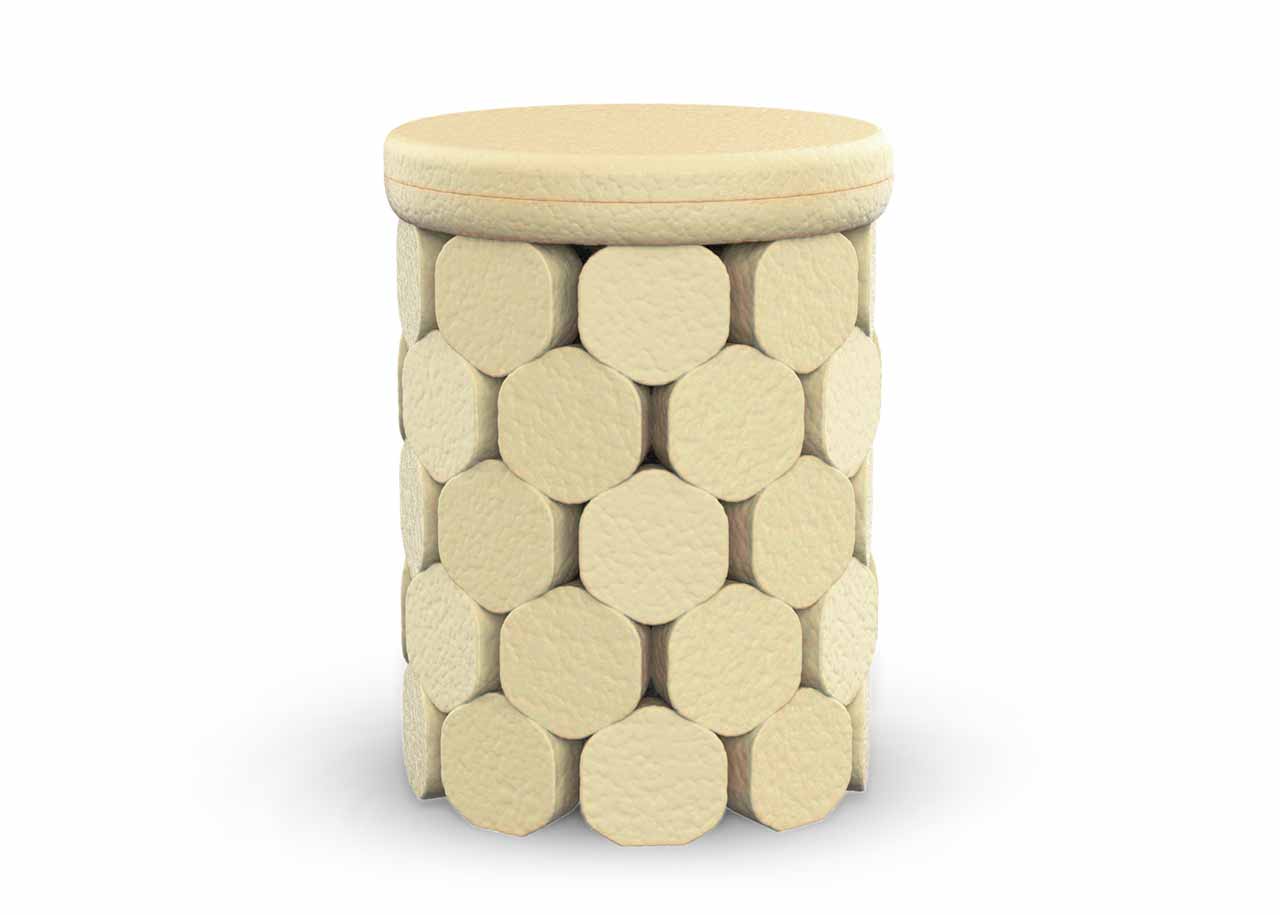
[Rendering: Courtesy of Humanscale]
Humanscale RECKONstruct Exhibit
Humanscale represented U.S. sustainable design at the XXII International Exhibition of La Triennale Milano with three new sustainable stools. Called RECKONstruct, the exhibit utilized the stools to explore design possibilities for a greener future. The first stool’s design focuses on the circular economy, and the result is a high-design chair created entirely of landfill-ready waste. To create the second stool, the designers looked to biomimicry, focusing in on a deep sea sponge’s natural design. The sponge’s framework provides surprising strength with little material, and the second stool’s design achieves the same. Designers working on the final stool examined the biofabrication of natural materials like fungi and yeast. The final product was not manufactured, but grown out of mycelium mushroom material.
